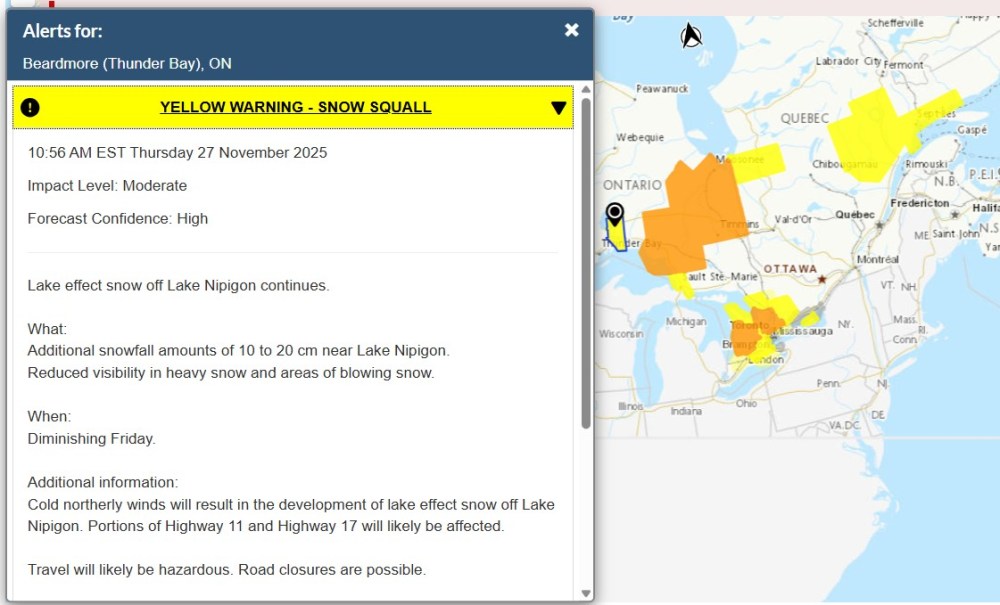Environment Canada adds colour coding to weather alerts
Advertisement
Read this article for free:
or
Already have an account? Log in here »
To continue reading, please subscribe:
Monthly Digital Subscription
$0 for the first 4 weeks*
- Enjoy unlimited reading on winnipegfreepress.com
- Read the E-Edition, our digital replica newspaper
- Access News Break, our award-winning app
- Play interactive puzzles
*No charge for 4 weeks then price increases to the regular rate of $19.00 plus GST every four weeks. Offer available to new and qualified returning subscribers only. Cancel any time.
Monthly Digital Subscription
$4.75/week*
- Enjoy unlimited reading on winnipegfreepress.com
- Read the E-Edition, our digital replica newspaper
- Access News Break, our award-winning app
- Play interactive puzzles
*Billed as $19 plus GST every four weeks. Cancel any time.
To continue reading, please subscribe:
Add Free Press access to your Brandon Sun subscription for only an additional
$1 for the first 4 weeks*
*Your next subscription payment will increase by $1.00 and you will be charged $16.99 plus GST for four weeks. After four weeks, your payment will increase to $23.99 plus GST every four weeks.
Read unlimited articles for free today:
or
Already have an account? Log in here »
Environment Canada has made a change to its national weather alert program: it’s now using a colour-coded system of yellow, orange and red alerts to indicate risk level.
Environment Canada meteorologist Gerald Cheng says the shift came after years of planning.
“We want to implement colour-coded weather alerts because we know it works and it’s recommended by the World Meteorological Organization,” Cheng said Wednesday.

“Many other countries use it such as the United Kingdom, France, Switzerland, South Africa, New Zealand just to name a few, and for them it’s very effective in communicating risks to the population.”
For example, yellow alerts will be most common for hazardous, short-term weather events. Orange alerts are less common and likely to cause significant damage. A red alert is reserved for rare, dangerous and life-threatening events.
The agency says some examples of red alert weather events are:
- the 1998 ice storm in Quebec and Ontario;
- an epic, record-breaking snowstorm in St. John’s, N.L., in January 2020; and
- the November 2021 atmospheric river in British Columbia that brought heavy rain and flooding, destroying roads and highways.
The types of alerts issued stay the same: watches, advisories and warnings. A watch indicates conditions are favourable for severe weather to develop and individuals should get ready; they are upgraded to warnings when severe weather is either occurring or imminent. Advisories are issued for weather events that are less severe such as blowing snow, fog, freezing drizzle and frost.
“We’re trying to communicate clearly to Canadians,” Cheng said, “but behind the scenes there’s a lot of work on the data to ensure that everything is running smoothly and showing correctly.”
Environment and Climate Change Minister Julie Dabrusin said in a statement, “We continue to experience more frequent and extreme weather in Canada, which makes it more important than ever for Canadians to have access to clear, accurate and easy-to-understand weather alerts.”
This report by The Canadian Press was first published Nov. 26, 2025.

